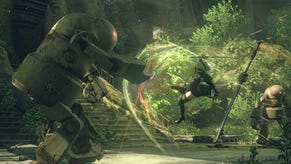Nier Automata's Switch port is very impressive - but not quite perfect
A game that struggled on PS4 and Xbox One transitions well to the Nintendo hybrid.
Nier Automata is one of the most celebrated last-generation action titles, marrying Platinum Games' signature stylings with inventive, varied gameplay and a mind-bending narrative. From a technical perspective though, the situation was far from ideal: the game was beset by frame-rate and image quality issues on last-gen machines, with wobbly performance coupled with plenty of aliasing. This is why the Switch port came as a bit of a surprise when it was announced a few months ago: there's a huge performance gap between the Switch and even the base last gen consoles with precious little room to cut resolution before image quality becomes unacceptably poor. This seems like one of the so-called "impossible ports" - a technically demanding title downscaled for Nintendo's hybrid console, often with somewhat mixed results.
The challenge is clear - and it's all down to just how difficult this game was to run on PS4 and Xbox One. Despite relatively pedestrian visuals, the title targeted 900p without any anti-aliasing, with somewhat messy performance on both machines. The typical run of play was 40-60fps, with combat and open-world traversal causing issues. It's important to keep this relatively poor showing in mind, because the Nintendo Switch falls far short of those machines in raw number-crunching performance. So what kind of compromises are we seeing here?
Relative to base last-gen consoles, the Switch release is comprehensively downgraded - though the overall image still looks surprisingly comparable. Measuring the game against its Xbox One S counterpart, the first thing that stands out is a significant reduction in texture detail. Across the board, textures are degraded, with lower resolutions not to mention simplified layers and material properties. In some areas, the textures look soupy, with no fine detail to speak of, though most of the time it's not quite as severe.
Foliage is pared back and altered to better fit the Switch. Trees and bushes feature much lower resolution alpha textures and have simplified layouts, appearing much less dense as a result. Grass density has only been mildly pared back but curiously, the 3D polygonal grass in the original versions of the game has been replaced with alpha-tested textures. It's a big change visually but the results generally look fine, although they do look a bit too bright when presented under shadowed regions.
Lighting has been simplified to some degree too. This is most clear with respect to the game's dynamic light sources, which are often stripped back or removed. In particular, most of the point lights in background areas have been removed. Volumetric lighting also appears to be absent on Switch, or at least significantly scaled back. There are also some pretty stark differences in ambient lighting at times. It's not totally clear what's going on, though I have to imagine tweaks to the demanding global illumination system present on last-gen consoles, or possibly its removal, may be to blame. Most of the time however, the Switch version holds up on its own terms - it's mostly the smaller-scale details that seem to stand out when there are differences.
Elsewhere, some of the geometric detail in the environments has been lost. This is occasionally quite obvious, but mostly the downgrades are small and only really stick out in side-by-side comparisons, things like less rounded barrels or blockier debris on the ground. Particle effects are modestly scaled back as well, with fewer particles spawned during explosions, sword hits and dodges. In the heat of combat this concession isn't too noticeable but fights appear a bit less intense as a result.
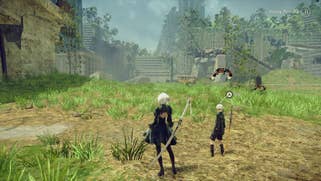
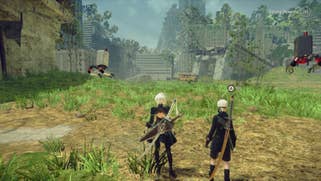

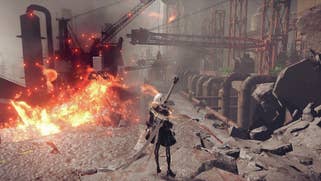



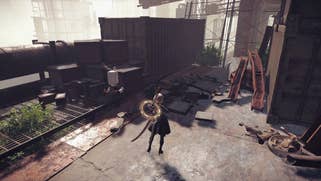
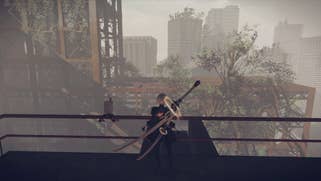
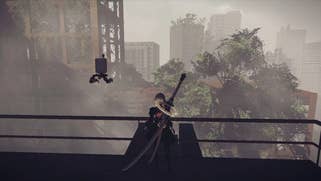
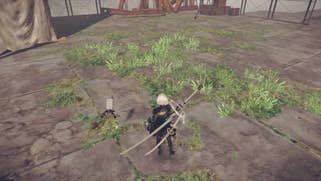
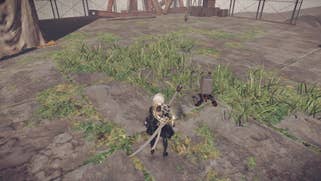



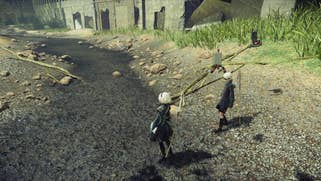


On the whole, though, the Switch release generally looks very comparable to the last-gen console versions. While there are a litany of cuts, most don't particularly stand out when actually playing and the game still looks and feels like Nier: Automata. In some scenes, the two machines are basically neck-and-neck, delivering slightly different-looking but similarly capable versions of the same shot.
There is one major settings advantage that the Switch release does have, however. Switch comes packaged with anti-aliasing. The anti-aliasing coverage doesn't particularly impress and gives the impression of a simple post-process technique, but it does exceed the last-gen versions on base consoles which inexplicably lacked AA. In areas with a lot of distant detail or fine foliage, the Switch often exhibits better image stability than Xbox One. Some shots do look substantially softer though, which comes down to the Switch's resolution setup.
In docked mode, the Switch aims for a 1080p resolution - which is higher than the last-gen base consoles. Some shots do count a little bit below that figure, but in most shots with some form of countable detail you can find 1080p edges. However, the resolve throughout any given shot does tend to vary quite a bit, especially during movement, and there are some stippling artifacts on certain edges, suggesting a form of reconstruction may be in play. The portable mode adopts a similar setup, but this time the target resolution is 720p. Compared side-by-side, the image does resolve a bit less clearly than in docked mode, but obviously on the Switch's screen it holds up much better. It looks reasonably sharp and clean on the internal display - though it can look a bit soft at times - and a lot of scenes really pop on the Switch OLED panel in particular. Outside of resolution, it seems to be a match for the docked mode in terms of visual settings.
So how does performance shake out? Virtuos has sensibly cut the frame-rate target here from 60fps on last-gen home consoles to 30fps here. Given that 60fps was a challenge on exponentially more powerful hardware, the reduced frame-rate was probably inevitable. At first, I was very impressed with the performance level. Yes, this is a 30fps game, but it did feel remarkably consistent - essentially a locked 30fps with stable frame-pacing for the first hour or so of gameplay. I did notice a drop or two while playing but these were very minor.
However, as I continued to prorgress, the picture became less rosy. Small frame-rate hitches became more common, particularly when traversing sections of the open world and when fighting enemies. It was still quite consistent but these small interruptions were definitely noticeable. As I closed up my time with Nier Automata, however, more pronounced frame-rate issues became fairly common. Some of the larger fights mostly played out in sub-30fps territory, hanging in the low-to-mid 20s at worst. A handful of environments also caused extended frame-rate issues.
Overall though, I do think the performance level is reasonable considering the hardware and the relatively strong quality of the visuals compared to last-gen home consoles. 30fps is the norm, with momentary dips that don't detract too much from the experience. It's really the larger battles that can prove seriously problematic, though this is hardly representative of the majority of the action. Portable mode seems to acquit itself about as well, with good performance overall with occasional sub-30fps moments. My impression is that the frame-rate level here is perhaps a bit more consistent though, with fewer drops in general play - a motif common to many Switch titles.
Clearly, a lot of time and effort was invested into making this port shine. Virtuos has reworked the game to the point where it looks similar to the Xbox One and PS4 versions of the game overall, and can even look somewhat better at times. Performance isn't perfect but it is quite good and manages to maintain 30fps through most gameplay. Nier Automata is a modern action classic that is well worth experiencing and Nintendo's hybrid console offers a smartly optimised reinterpretation that works great on the go.
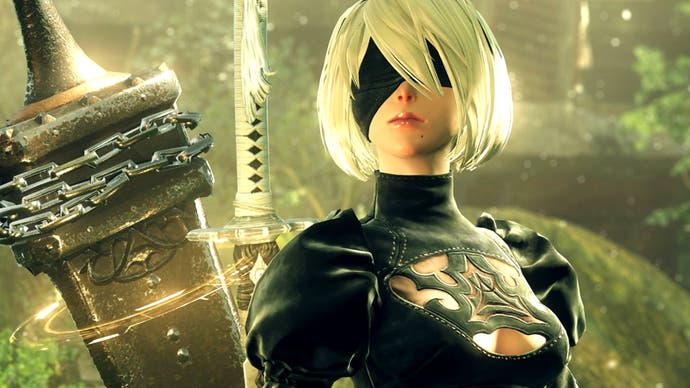



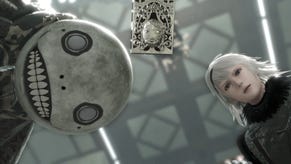
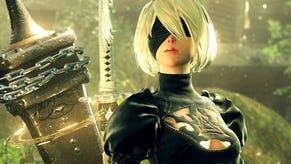
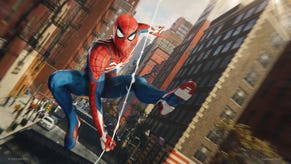


-0-0-screenshot.png?width=291&height=164&fit=crop&quality=80&format=jpg&auto=webp)
